Summary of climate disasters on the planet from May 28 to June 3, 2025
Friends, today we want to be completely honest with you…
Read this summary of climate disasters from the past week, May 28 to June 3, 2025, and you will understand the real reason why we create these reports.
Germany
On May 31, a powerful thunderstorm with heavy rain and hail struck the federal state of North Rhine-Westphalia in Germany.
The city of Hückelhoven was especially affected, where a sudden storm disrupted the largest summer festival, Jeck en de City. The sky darkened rapidly, strong winds picked up, and within minutes the festival grounds were flooded by rain. Hailstones up to 3 cm (1.2 in) in diameter injured 11 people—mostly with lacerations.

Festival participants take cover from the sudden storm, Hückelhoven, North Rhine-Westphalia, Germany
Some attendees blamed the organizers for reacting too slowly to the approaching storm, but the organizers rejected the criticism. One of them, Michael Frentzen from Electrisize GmbH, explained that in more than 20 years in the industry, he had never encountered such a sudden and destructive weather event.
Although constant communication was maintained with the German Meteorological Service, the hail warning came only at the very last moment—radar had failed to detect it in advance. The downpours flooded roads and triggered mudflows in some districts. In some areas, more than 60 liters per square meter (2.4 in) of rain fell within a few hours.
That day, over 70,000 lightning strikes were recorded across the country.
One lightning bolt struck a train’s overhead power line near Hückelhoven. The train came to a halt on a bridge, and around 160 passengers had to walk along the tracks to the nearest station. Those unable to walk were transported on wheeled boards.
In Essen, one of the country’s largest cities, a lightning strike caused a fire in a residential building. Residents managed to evacuate in time, but the building became uninhabitable due to the roof burning down.
In the city of Aachen, the Gran Fondo Race cycling event, which was set to host 1,000 participants and serve as a qualifying round for the World Championship in Australia, was canceled due to the extreme weather.
Switzerland
On May 28, a massive glacier collapse occurred in the Swiss canton of Valais: around 3 million m³ (105.9 million ft³) of rock and ice broke off into the Lötschental valley. The total volume of ice and rock debris at the bottom of the Lötschental valley is estimated at 10 million m³ (353 million ft³). The debris pile reaches several dozen meters (100+ ft) in height and stretches for more than 2 km (1.24 mi). The village of Blatten was nearly completely destroyed, and the surviving houses were flooded by the Lonza River after its course was blocked by a massive rockfall.
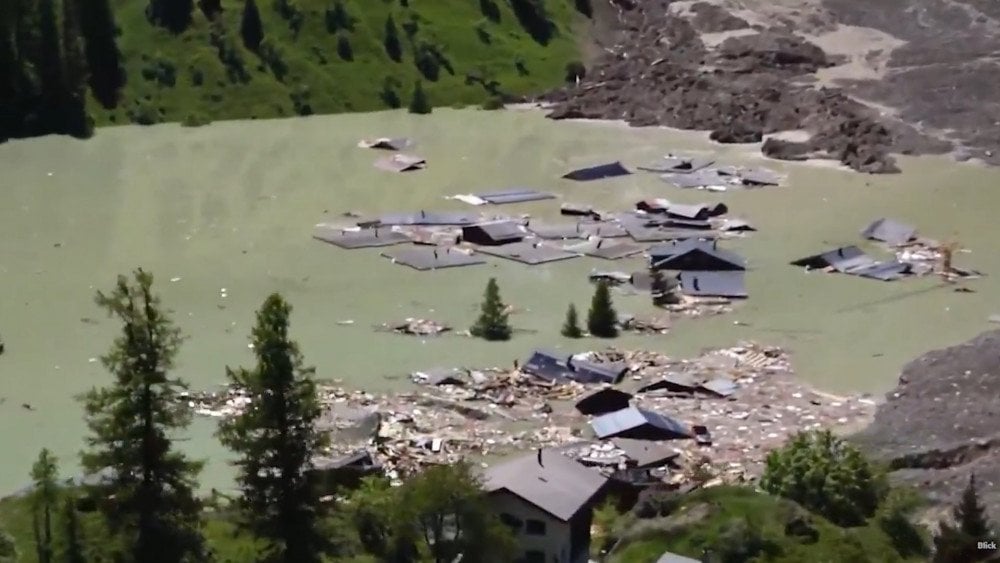
Shocking glacier collapse destroyed the village of Blatten, canton of Valais, Switzerland
Many local residents lost everything: homes, farming equipment, businesses. All they had left were the belongings they managed to take with them during evacuation — for which they had no more than 90 minutes to prepare.
Back on May 19, 306 people had already been evacuated from Blatten as a preventive measure. The signal came from the unusually rapid displacement of a rock mass. According to a specialist from the Helmholtz Center for Geosciences, rock masses on Mount Kleines Nesthorn shifted by 3 meters (9.8 ft) in just two days. Hundreds of cows, sheep, and rabbits were also successfully evacuated from the danger zone.
But tragedy could not be avoided: the Tönmatte homestead, located on the edge of the village, had been considered safe and lay outside the evacuation zone—but was still buried under the rockfall. The farm’s owner went missing and is presumed to have been inside the barn with his animals when the glacier collapsed.
Due to unstable ground and high ice content, the disaster zone remains closed to vehicles, tourists, and local residents.
Egypt
On May 31, a powerful storm struck Alexandria, the main port city in northern Egypt.
Strong winds reaching up to 60 km/h (37 mph), thunderstorms, and intense hail caused chaos in the streets of the city.
The storm toppled streetlights, trees, and billboards, triggering panic among residents.
Due to gale-force winds and hail pelting directly against the windows, visitors of the cafés were forced to flee for safety. The streets turned into raging rivers, prompting many businesses and shops to close and residents to seek shelter.

Aftermath of the powerful storm in Egypt: flooded streets and overturned motorbikes
Parts of the city lost power. Coastal roads and underground passages were temporarily closed, and traffic jams formed at major intersections.
In the El Raml district, a residential building collapsed, and two more were partially damaged in the Sporting district. According to official reports, there were no fatalities. However, local media reported at least two injuries: a section of the building fell directly onto a car with people inside.
To ensure student safety, Alexandria University postponed its exams.
Due to the storm, operations at Alexandria's seaports were temporarily suspended, and all fishing activity was halted.
City authorities declared the highest level of emergency. At this time of year, a storm of such strength on Egypt’s Mediterranean coast is a completely unprecedented event.
Nigeria
As a result of torrential rains that struck the city of Mokwa, Nigeria, overnight from May 29 to 30, a large-scale flood occurred. It has become one of the most devastating in the past 60 years. As of June 2, the death toll had exceeded 200 people, and around 1,000 local residents were reported missing.
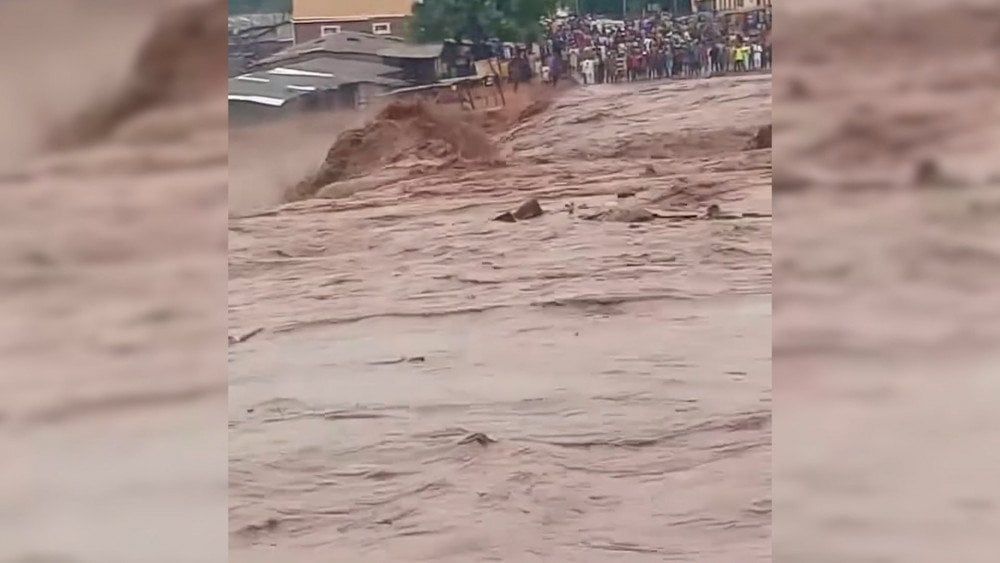
Devastating flood in Mokwa, Nigeria, claimed hundreds of lives
The disaster caused colossal damage to the city’s infrastructure. A total of 265 residential houses were completely destroyed, and two strategically important bridges were swept away by raging floodwaters. In the worst-hit areas, about 3,000 buildings ended up submerged.
The most affected districts were Tiffin Maza and Anguwan Hausawa.
More than 5,000 people were left homeless and are now in urgent need of assistance.
Eyewitnesses report that the water came from far away—suddenly and rapidly—catching sleeping residents off guard. A powerful current over 2 meters (6.6 ft) high began sweeping away everything in its path. According to rescuers, many victims were carried away by the strong flow into the Niger River.
The National Emergency Management Agency has already described the event as an “unprecedented flood.” But the most alarming part is that this isn’t even the peak of the season.
Canada
Canada is experiencing one of the most severe wildfire seasons in recent years.
Three provinces—Manitoba, Saskatchewan, and Alberta—have faced large-scale evacuations. More than 26,000 people were forced to leave their homes.
In Manitoba, the burned area is nearly three times larger than the 5-year average.
Hotels housing evacuees are overcrowded, with people sleeping on air mattresses and cots.
Several remote Indigenous communities, including Pimicikamak and Mathias Colomb, found themselves surrounded by flames without proper firefighting equipment. Residents battled the fire using garden hoses and just two fire trucks.
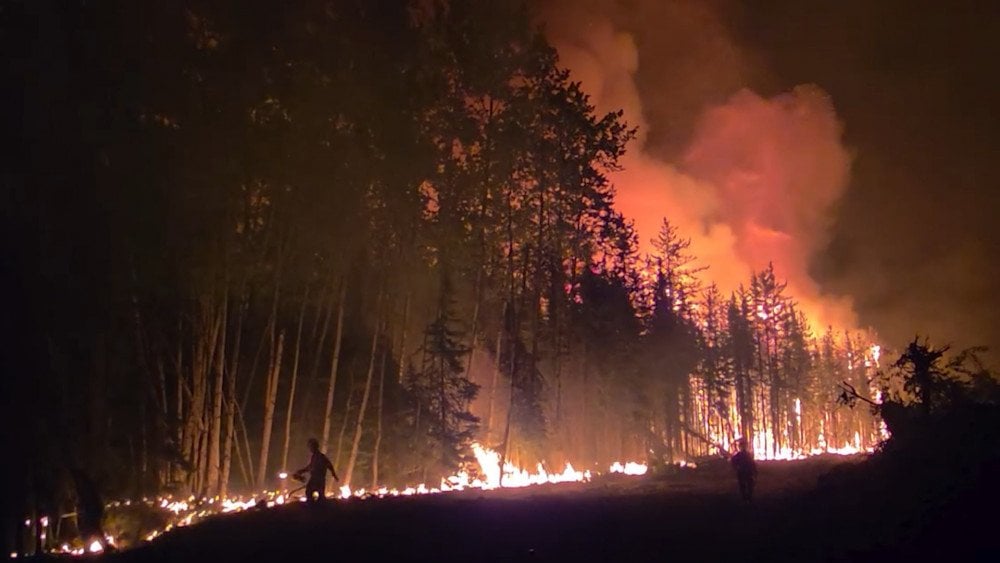
Firefighters battle one of the strongest wildfires in Canada
In Saskatchewan, the fire destroyed around 400 structures, and firefighters were forced to retreat due to the fire’s extreme and unpredictable behavior.
In the city of La Ronge, the flames reached the airport and damaged the air tanker base used for aerial firefighting.
As of June 3, Alberta was dealing with 56 active wildfires, nearly half of which were classified as out of control.
Due to the hard-to-reach areas and the scale of the disaster, American firefighters and aircraft were called in to help.
Smoke from the wildfires severely worsened air quality not only in Canada but also in several U.S. states. In North Dakota, Minnesota, and Montana, the air reached “unhealthy” levels. A massive smoke plume crossed the Atlantic and reached Europe on June 1.
USA
On May 30, a tornado of at least EF2 strength struck Washington County in the state of Kentucky without warning. There had been no forecast for severe thunderstorms—let alone tornadoes—for that day, and the warning came only minutes before the storm hit.
The twister flipped vehicles and uprooted trees. Numerous homes suffered severe damage, and two were completely destroyed.
As a result of the tornado, one person died and seven others were injured.
On the evening of May 28, a powerful supercell thunderstorm struck Austin, the capital of Texas, causing widespread destruction.

Powerful storm caused chaos and destruction in Austin, Texas, USA
In just half an hour, up to 80 mm (3.1 in) of rain fell across the city, overwhelming the drainage system and triggering flash floods. One person was swept away by floodwaters and tragically died.
According to a research team from the U.S. National Weather Service, the storm produced a microburst that carved a massive path of destruction 16 km (10 mi) long and about 3 km (1.9 mi) wide through central Austin.
Winds, which reached speeds of up to 130 km/h (81 mph) in some areas, brought down trees and more than 100 power poles, and tore roofs off houses in Hyde Park, one of the city’s oldest neighborhoods. Over 72,000 households were left without power.
At Austin-Bergstrom International Airport, wind gusts shattered windows and blew in entrance doors.
On June 1, a powerful storm struck the densely populated Dallas–Fort Worth metroplex in North Texas, bringing strong winds, torrential rain, and hailstones up to 7 cm (2.8 in) in diameter.
The city of Everman was hit especially hard, with ice chunks smashing car windows and damaging rooftops.
In a park on the shore of Benbrook Lake, lightning struck a shelter where 14 people were taking cover from the rain. Two were rendered unconscious and hospitalized, while the rest received treatment on the spot.
Tornadoes
On May 28, a tornado in the Armenian city of Artik ripped roofs off several houses and uprooted trees. In addition to the twister, large hail also hit Shirak Province, damaging orchards and cereal crops.
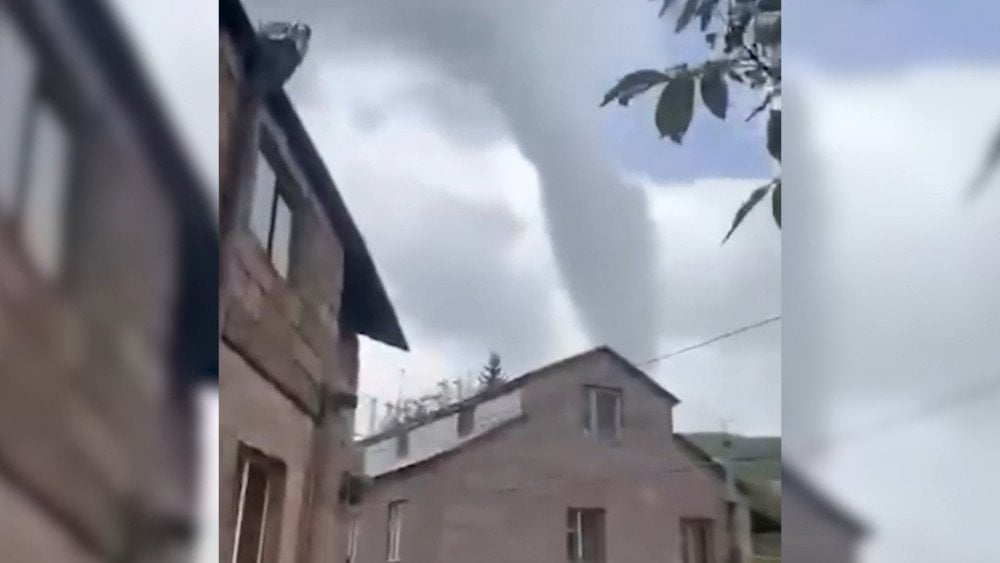
Rare natural phenomenon: tornado above residential buildings in Artik, Shirak Province, Armenia
It’s worth noting that tornadoes are extremely rare in Armenia—and for Shirak Province, this is an almost unprecedented event, as local conditions typically do not support vortex formation.
On May 29, the island of Cyprus was struck by severe weather. Rainstorms, lightning, and hail swept across the island. In the village of Kalo Chorio, in the Larnaca District, residents witnessed a rare tornado that caused damage to some properties.
That same day, another atypical tornado struck the city of Gazipaşa in Turkey’s Antalya Province. The vortex formed over the sea but moved inland and, within just five minutes, completely destroyed around 70 greenhouses, tore roofs off several houses, and knocked down numerous trees and utility poles, temporarily blocking roads.

Destructive vortex demolishes greenhouses in Gazipaşa, Antalya Province, Turkey
After the tornado, the area was hit by torrential rain and hail, further worsening the situation.
On May 30, a massive tornado appeared in the sky above the Ukrainian city of Chernihiv—fortunately, it did not touch the ground and thus caused no damage.
What is deeply concerning is that tornadoes are beginning to form in the northern part of the country, where conditions had previously made such phenomena nearly impossible.
Across Europe, the number of tornadoes has been increasing dramatically in recent years. And this surge is following an exponential trend.
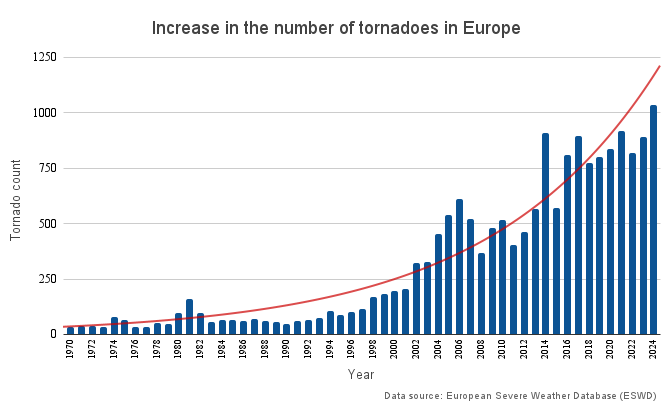
Exponential increase in the number of tornadoes in Europe
The year 2024 set a record for tornadoes in the region—the highest number ever observed.
Today we want to speak directly to our readers. Do you hear WHAT we’re trying to convey to everyone watching this video? Do you realize WHY, episode after episode, we repeat the same words: “strongest ever,” “record-breaking,” “first time in history,” “people weren’t prepared”?
In one country, the flood came so suddenly that even residents used to the rainy season couldn’t escape. In another country, with a well-developed tornado warning system, it failed to predict the event. In a third region, hail was so strong it left lacerations on people’s bodies.
Everyone is beginning to notice what’s happening—though many may not yet grasp the full depth of these changes.
No matter where you are on Earth, it’s vital to understand: no one is immune to the looming climate threats. And what we’re sharing is not an attempt to frighten, as some comments suggest—it is a warning, so that no one is caught off guard.
Many still believe in the illusion of safety, hoping disaster will bypass them — simply because it hasn’t struck them yet. But millions of people around the world have already faced it head-on: their homes destroyed, their loved ones gone, their futures shattered.
Just because you don’t see major disasters outside your window doesn’t mean they’re not happening. It only means the wave of climate catastrophes hasn’t yet reached your region. Sadly, it’s only a matter of time.
We still have a chance—and it’s crucial not to miss it. That chance lies in the technological solutions proposed by the international scientific community ALLATRA. One of these technologies has already proven effective, demonstrating in practice a reduction in the strength and frequency of disasters. If we start acting now—we CAN change the course of events.
Watch the video version of this article here:
Leave a comment